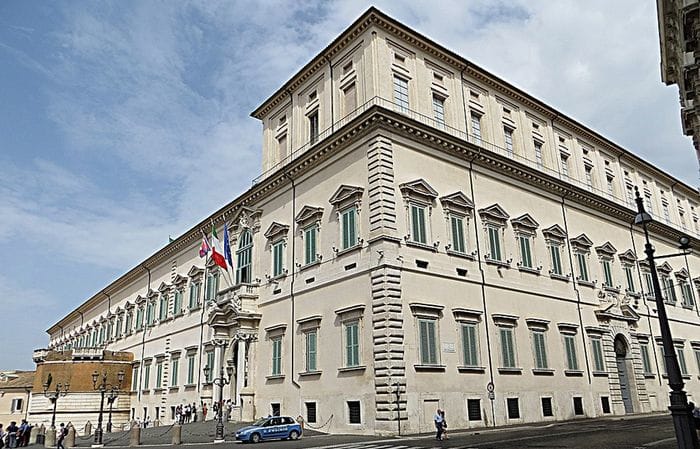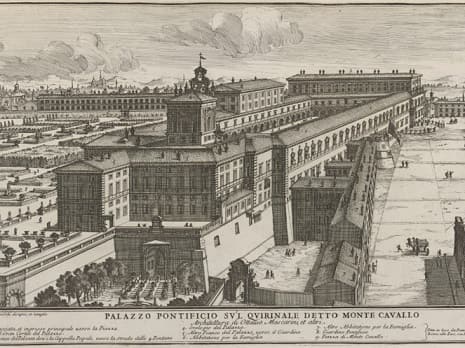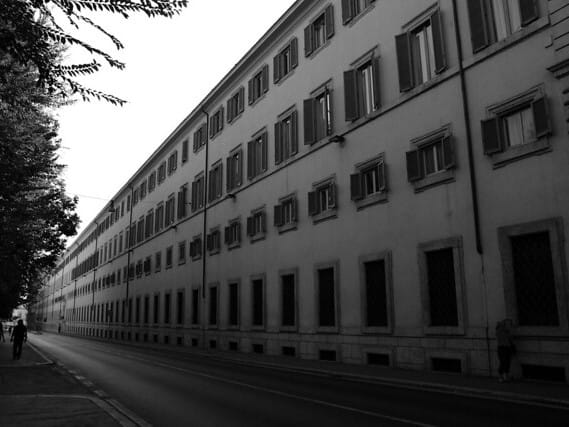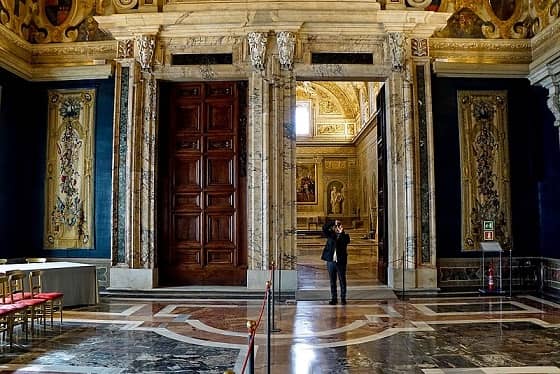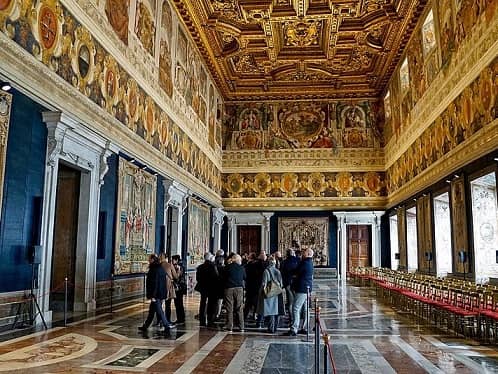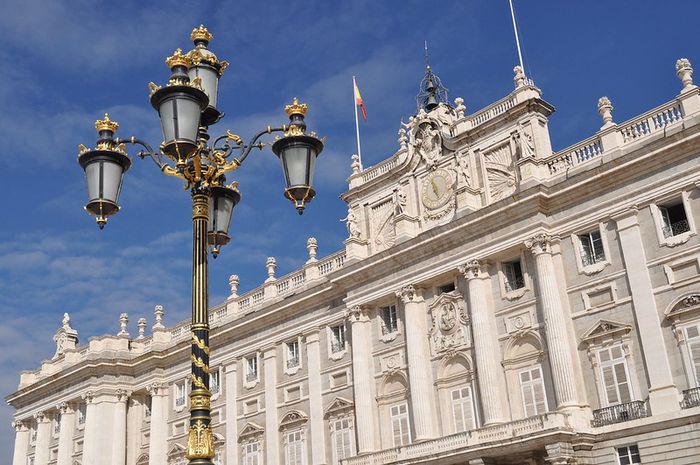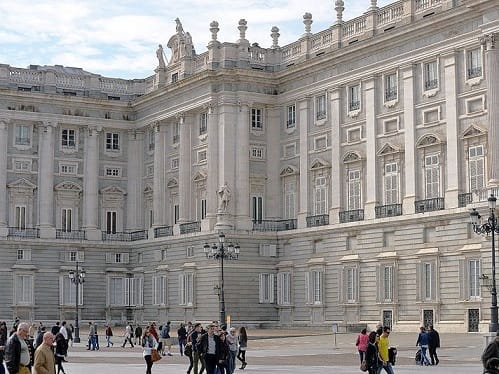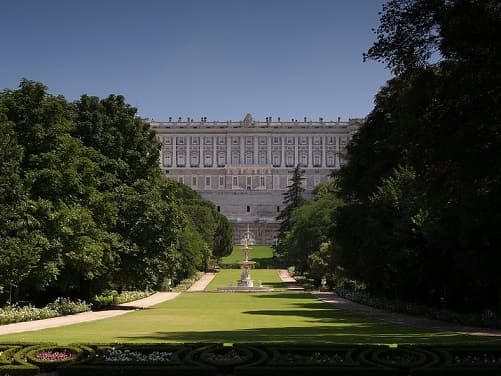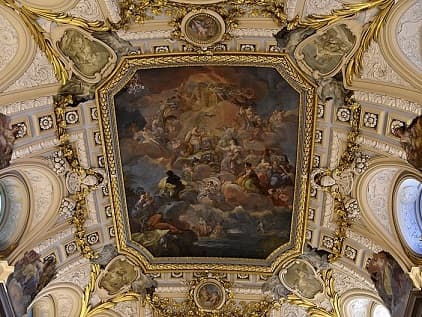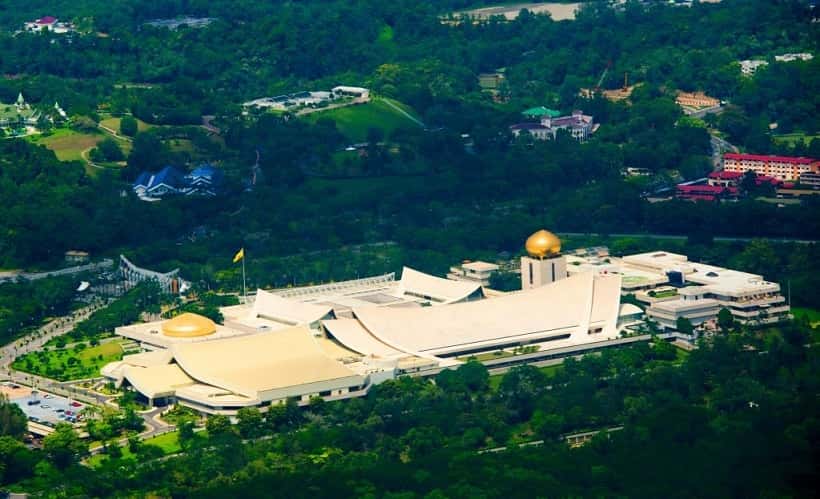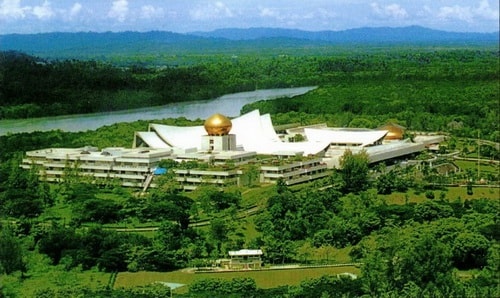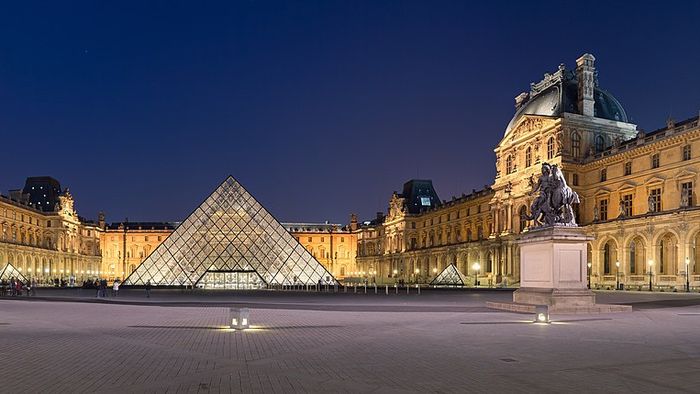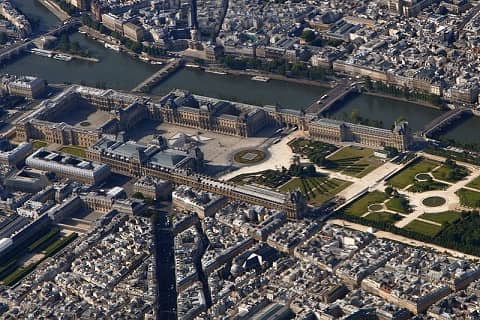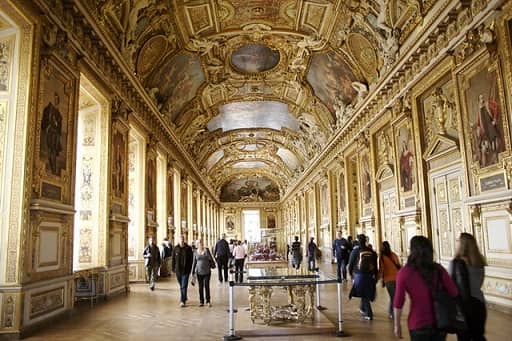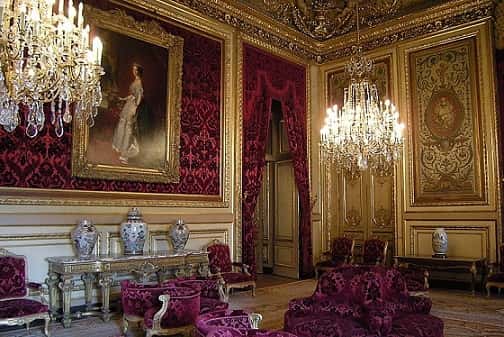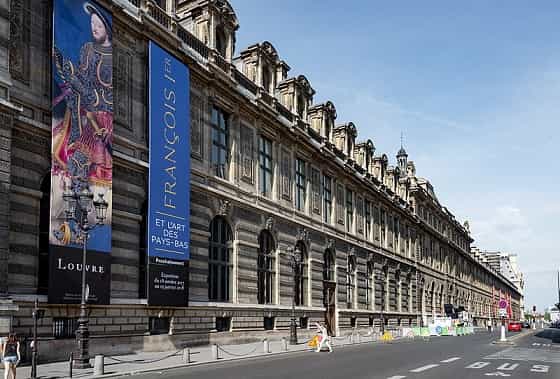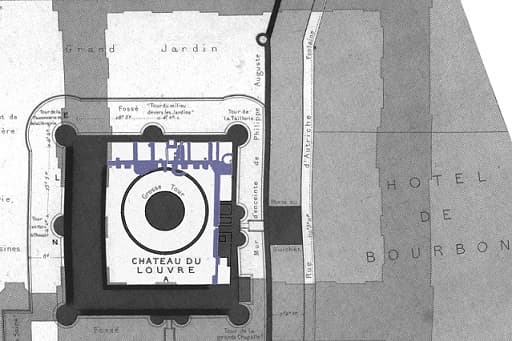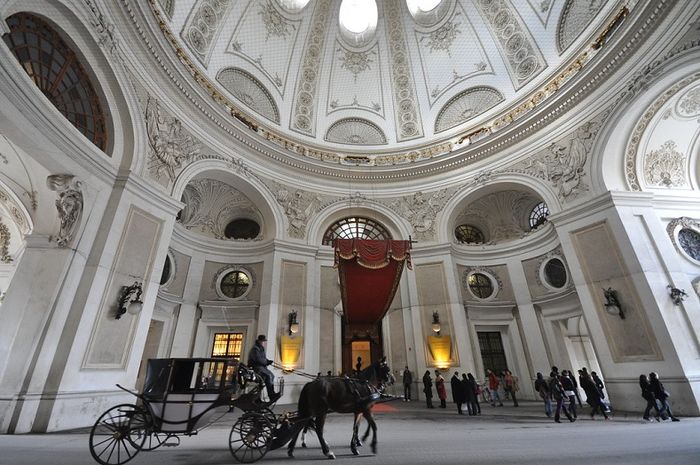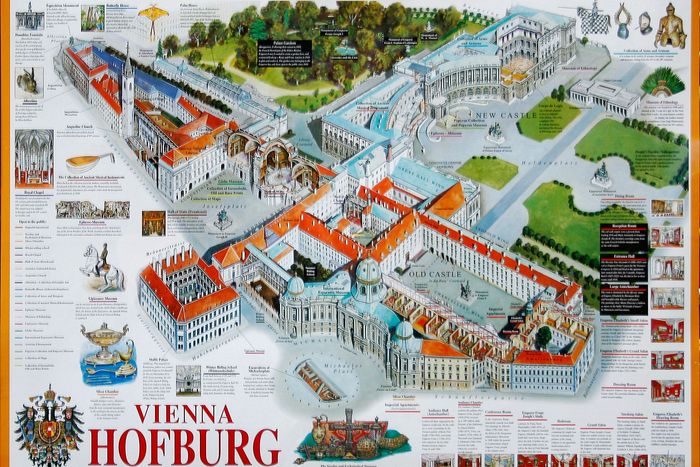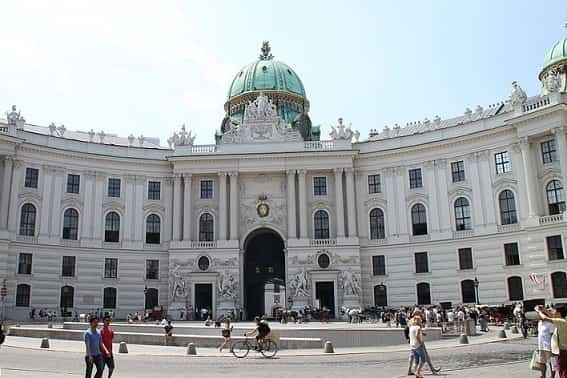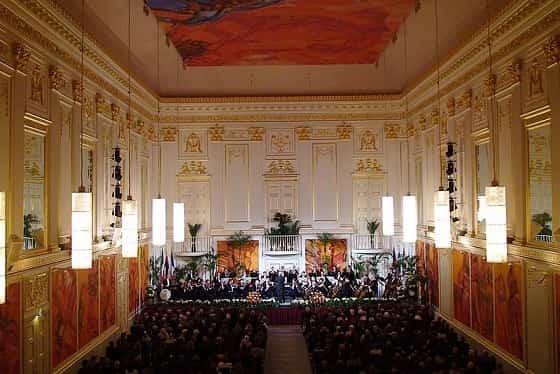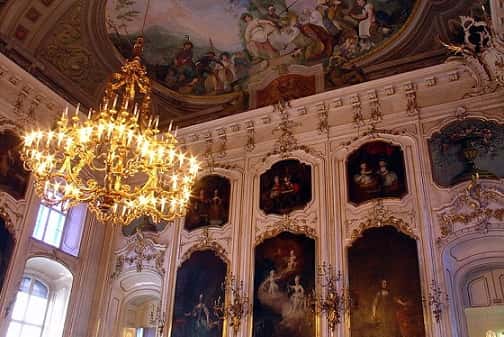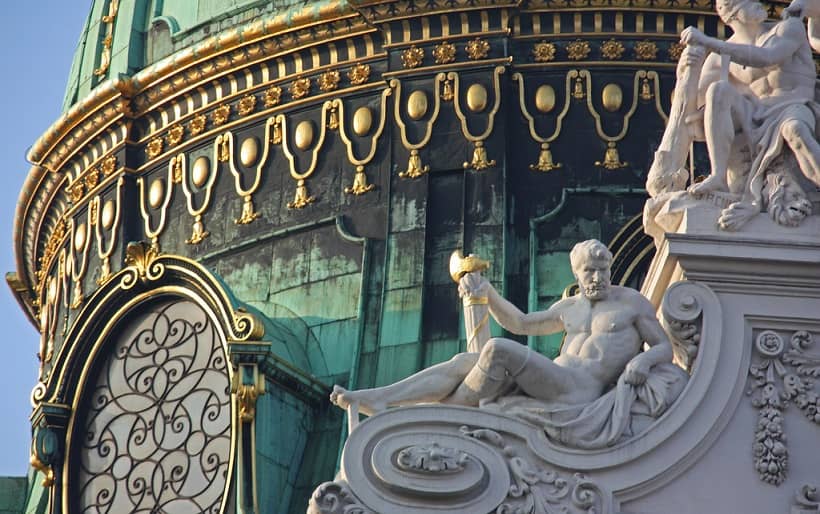These royal palaces were built to impress. And impress they do, thanks to their size and rich decorations. Some have thousands of rooms and up to 5 swimming pools. Others have royal pharmacies, armories, and several entertainment halls. Without further ado, here are the 5 largest royal palaces in the world by continuous floor space.
5. Quirinal Palace, Italy. 110,500 m2
(1,190,000 ft2)
One day the pope visited a friend’s house on the Quirinal Hill of Rome. The enchanting house had beautiful gardens. And the pope decided he, too, wanted a house in the area.
Unlike his usual residence in Rome, the Quirinal was far enough from the Tiber River to spare him the river’s smell and high enough to spare him the bouts of malaria so frequent in the valleys of the Eternal City.
The Quirinal’s peculiar P-shape
Pope Gregory XIII began construction of his summer home in 1583.
At first, the would-be palace was only one building surrounded by gardens. But later, popes kept remodeling it and adding wings. So the palace ended up having four big buildings that formed a rectangle. And they had a courtyard in the middle.
In the 18th century, Pope Clement XII finished an extra building. Italians call it the Manica Lunga (Long Handle) since it looks like a handle. It is a very long building (360 m/ 1,181 ft) attached to one of the sides of the rectangle. It gives the palace an unusual “P” shape.
The popes went all out with the inner decor. The floors are covered with colorful marbles that form geometric patterns. And walls and ceilings are full of frescoes and decorations.
An imperial, royal, and presidential palace
When Napoleon invaded Italy at the end of the 18th century, he seized the Quirinal Palace for himself. And he sent his architects to give it a more Neoclassical look.
In 1871, Italy became a unified kingdom and the new kings, once more, chose the Quirinal as their palace in Rome.
Nowadays, the palace is the home of the president of the republic.
HIGHLIGHTS
- Original building: 16th century
- Latest addition/remodeling: 19th century
- 1,200 rooms
- Famous architect Gian Lorenzo Bernini designed a part of the building
- Occupied by 30 popes, 4 kings, and 12 presidents of the republic
- 1,807 people work there nowadays
- $230 million in maintenance a year
- 250,000 annual visitors
- Currently the official residence of the president of the republic and a museum
4. Royal Palace of Madrid, Spain. 135,000 m2 (1,450,000 ft2)
This palace was reborn from the ashes, like a Spanish phoenix.
In the 9th century, invading Muslim troops built a fort in Madrid. It had a mosque, residential quarters, and gardens.
Eventually, the Spaniards reconquered their territory. And in the next centuries, they turned the fort into a sumptuous palace known as the Alcazar. It was the home of the Spanish kings.
The Royal Palace rises from the ashes
But on Christmas Eve of 1734, there was a fire in the Alcazar. It may have started in the rooms of painter Jean Ranc, the product of drunk servants, and an unattended chimney.
The fire burned for four days until it consumed itself, leaving nothing behind.
Immediately, King Philip V decided to build a new palace on the same site. He charged one of the best architects of the time, Italian Filippo Juvarra, with the task. But Juvarra died and left the palace unfinished. So it was up to his pupil Sachetti to adapt Juvarra’s plans and build the square-plan palace.
A palace fit for the grandson of Louis XIV
King Philip had been raised in the magnificent palace of Versailles, in the court of Louis XIV, his French grandfather.
And Philip loved the glamour of the French palaces of his youth. So architect Juvarra drew inspiration from them for his Spanish palace.
Juvarra used marble to decorate the interiors and local limestone and granite for the facade. Thanks to these materials, the new palace was also protected against fires.
The palace was built in 14 years, but it took 8 more years, until 1759, for it to be appropriately furnished.
King Philip even outdid his grandiose grandfather, for Madrid’s Royal Palace is twice the size of Versailles.
The second architect, Sachetti, had designed a perfectly symmetric building. But the very first resident of the palace, Philip’s son, Charles III, added two projecting wings to his new abode, breaking the symmetry.
Art-loving King Charles called two of the most famous painters in the world at the time, Tiepolo and Mengs, to decorate the walls and ceilings of his home and seat of government.
King Charles’ apartments were located on the Oriental Facade. Nowadays, his descendant King Felipe VI of Spain gives audiences in those rooms.
HIGHLIGHTS
- Original building: 18th century
- Built in 14 years
- Each facade is 130 m long (426 ft)
- Has 3,418 rooms
- Has a royal pharmacy
- Dining room of 400 m2 (4,300 ft2)
- Royal library: 300,000 volumes from various centuries
- China Room
- Throne room with a ceiling painted by Tiepolo
- Gallery with paintings by Velasquez, Goya, Caravaggio
- Royal armory with armor used by the Spanish kings, plus the swords of the conquerors of the Americas, Hernan Cortes and Francisco Pizarro.
- The royal stables were turned into a garden in the 20th century
- The kitchen occupies 800 m2 (8,600 ft2)
- It is currently the official residence of the king of Spain (in reality, he lives in a 1,000 m2 (10,700 ft²) house outside of Madrid)
3. Istana Nurul Iman, Brunei. 200,000 m2 (2,150,000 ft2)
Brunei has had many run-ins with European powers during its history. And in the 19th century, this Asian country fell under British rule and become a protectorate.
Nevertheless, the sultan remained the head of the state.
And in 1979, Sultan Hassanal Bolkiah negotiated Brunei’s independence with the British. Everyone agreed that the country would be independent five years later.
Istana Nurul is covered in marble and gold
To mark the occasion, the sultan commissioned the construction of a palace, the Istana Nurul Iman.
He inaugurated it on independence day, January 1st of 1984. And since he is one of the richest men in the world, he decorated it with the most luxurious materials.
The massive building is mainly decorated with gold and marble. Door tiles, window tiles, and doorknobs are made of solid gold. And 38 different types of marble were used in the interiors.
The Istana has 44 marble staircases, but for those that do not feel like exerting themselves, it also has 18 elevators.
A palace of faith
‘Istana Nurul Iman’ means ‘Palace of the Light of Faith.’ The name mixes Malay and Arabic since those two cultures and languages are pervasive in Brunei.
The palace itself has elements of both. Its golden domes are Islamic, while the curved roofs are Malay.
The 200,000 m2 (2,150,000 ft2) palace has 1,788 rooms, stables, and several swimming pools. It is the official residence of the sultan and the seat of government.
The palace is next to a great park and the Brunei River. It is located a few kilometers away from Brunei’s capital, Bandar Seri Begawan.
Despite its size, Istana was completed in just two years. It cost 1.4 billion dollars.
HIGHLIGHTS
- Original building: 20th century
- Built in 2 years
- Cost: 1.4 billion dollars
- 1,788 rooms
- 257 bathrooms
- Banqueting hall for 5,000
- Mosque for 1,500
- Underground garage for 110 cars
- Stable for 200 horses, with air conditioning
- 5 swimming pools
- World Record: Largest residential palace
- Currently the residence of the sultan of Brunei
2. Louvre, France. 210,000 m2 (2,260,000 ft2)
French King Philip II was leaving for the Crusades in 1190. So he built a fort to protect Paris from invaders during his absence.
In the following centuries, when the kings were in Paris, they stayed at the fort. So in the 14th century, Charles V finally decided to expand it.
The Louvre begins as a single building
About two centuries later, Francis I decided to make Paris his permanent residence (1528). Thus, he began to embellish this medieval chateau. Most of his plans, though, were carried out after his death by his son Henry II and his grandson Charles IX.
In those times, the Louvre only had one building and a small gallery. Then, Henry II’s wife, Catherine de Medici, built herself another palace (1564), the Tuileries, opposite the Louvre. Both buildings stood alone, separated by vast gardens.
The vicinity of the palaces gave Henry IV the idea to unite them and create one huge royal residence. To the effect, he built the Grande Galerie, which runs next to the Seine river for 460 m (1,509 ft). The Galerie connected the Louvre with the Tuileries.
The Louvre becomes a mega building

In the 17th century, Louis XIV and his architect turned the original building into a square palace. It had a courtyard, the Cour Carree, at its center.
But the king soon left Paris in favor of his new royal residence: Versailles. And a century later, the Louvre became a museum (1793).
Napoleon I and Napoleon III lived in the Tuileries. They built a gallery that parallels the one Henry IV erected along the Seine (19th century). Therefore, by the end of Napoleon III’s life, all the buildings of the Louvre and Tuileries were connected and formed a rectangle.
However, in 1871, insurgents burnt down the Tuileries. With that side of the rectangle gone, the Louvre got its distinctive U shape.
Despite all the additions and subtractions, the Louvre looks like one cohesive palace.
A modern underground floor for the Louvre
During the 1980s and 90s, the museum underwent a renovation. Architects of Verner Johnson added an underground floor with storage rooms, cafeterias, shops, parking lots, and other amenities. And they designed the glass pyramid that now serves as the entrance to the Louvre.
In 2012, four courtyards were covered with glass ceilings.
With the additions, the Louvre reached a floor space of 210,000 m2, which makes it the second-largest royal palace in the world.
HIGHLIGHTS
- Original building: 12th century
- Latest addition/remodeling: 21st century
- It has four floors
- Underground parking lot for 1,000 cars and 350 buses
- Has cafeterias, shops, art galleries, royal apartments
- World’s largest museum
- The Louvre receives 8 million visitors each year
- Currently a museum
1. Hofburg Complex, Austria. 240,000 m2 (2,580,000 ft2)
Hofburg started as a more modest abode in the 13th century.
It was a fortified castle built in Vienna by the Babenbergs, who governed Austria at the time. Soon, though, the Habsburg family took the throne -and the castle.
For the next 600 years, almost each Habsburg emperor remodeled it or added buildings.
Nowadays, Hofburg’s main buildings are all connected, forming one massive, contorted building. According to official sources, it has 240,000 m2 (2,580,000 ft2) of continuous floor space, which makes Hofburg the largest royal palace in the world.
Hofburg Palace has a mix of styles
In the 16th century, dowager empress Wilhelmina Amalia built herself a stand-alone building, the Amalia Wing, in front of the original palace. Many subsequent empresses lived there, including famous Sissi.
But the building was not to remain independent for long. In 1668, Leopold I connected the Amalia Wing with the rest of the palace through the Leopold Wing.
This magnificently decorated building, the Leopold, is where the president of Austria has his offices now.
More and more new wings for the Hofburg
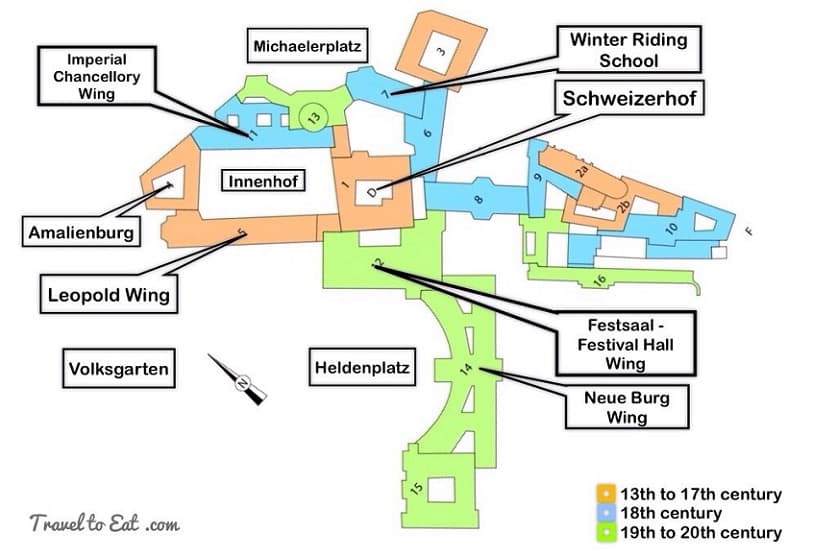
In the 18th century, the kings asked Johann Fischer von Erlach and his son to build several new buildings, including a library called Imperial Chancellory Wing. It would later be used as royal apartments. They also built the Winter Riding School, where young aristocrats learned to ride horses; and the Ball Rooms Wing with its opera house.
In the Ball Rooms Wing, composers such as Liszt, Beethoven, Strauss, and Mozart played several of their works for the very first time.
The 19th century saw the addition of the Festival Hall Wing and the curved St. Michael Wing. While the 20th century brought the also curved building called New Wing.
The monarchy fell in 1918. So the Hofburg is now the seat of the republican government. It is used for conferences, exhibitions, and receptions, and its decorated halls are rented out for events.
HIGHLIGHTS
- Original building: 13th century
- Latest addition/remodeling: 21st century
- 2,600 rooms
- 18 wings
- 19 courtyards
- 44 event rooms are rented out now, with a total floor space of 17,000 m2
- Three-storey wine cellar
- Library with 200,000 volumes
- Riding school with stables
- Opera house
- Number of people that live and work at the palace today: 5,000
- Currently the seat of government, a museum, and a public library
Some of the other palaces that were considered for this article:
Potala Palace, Tibet.

Might very well be the largest royal palace in the world. Then again, maybe not. It is difficult to tell without official numbers and due to the highly irregular floor plan of the palace.
At its widest, it is 360 m (1,180 ft), and at its deepest, 260 m (853 ft). But in some sections, the building is just a few meters deep.
Potala has 13 floors -the layout changes from floor to floor-, and 1,000 rooms, the largest of which is 725 m2 (7,800 ft2). The monastery alone, which is one of the smallest buildings of Potala, covers 25,000 m2 (82,000 ft2).
Potala was built in the 600s, and for hundreds of years, was the residence of the Dalai Lamas, the former rulers of Tibet.
It is divided into two main sections: the Red Palace was used for religious activities, and the White Palace was the residential and administrative area.
Topkapi Palace, Turkey. 400,000 m2 (4,300,000 ft2). It is not an interconnected palace. It is a complex with many stand-alone buildings, gardens, and courtyards.
Palace of Parliament, Romania. 365,000 m2 (3,930,000 ft2). It was built by dictator Ceausescu, so it has never been a royal palace.
Hermitage Museum Complex, Russia. The whole museum has 234,000 m2 (2,530,000 ft2) of floor space, but that includes several freestanding buildings. The connected buildings are five, four on the river bank and one in the back, and were built by Empress Catherine the Great. Their combined size is about 100,000 m2. (1,076,000 ft2). So the Hermitage is the sixth-largest royal palace in the world by continuous floor space. It almost made into the list.
Ak Aaray, Turkey. 200,000 m2 (2,153,000 ft2). It has never been a royal palace. It is the home of the president of Turkey.
Apostolic Palace, Vatican City. 162,000 m2 (1,744,000 ft2). It has never been a royal palace. It is the residence of the popes.
Malbork Castle, Poland. 143,000 m2 (1,539,000 ft2). A fortress built in the Dark Ages. Not all its buildings are connected.
Laxmi Vilas Palace, India. Officially, it is supposed to be four times the size of London’s Buckingham Palace (Buckingham is 77,000 m2 / 829,000 ft2). In reality, it is probably about the same size.
Laxmi’s facade is 152 m (498 ft) wide and some 60 m (197 ft) deep. Buckingham’s is 108 m (354 ft) wide, and the building is 120 m deep (394 ft). Both palaces have inner courtyards that subtract floor space. And both are three-storey high, with Laxmi being irregular and having more floors in some tracts and less in others. Buckingham has 775 rooms; Laxmi, 170.
More Articles
